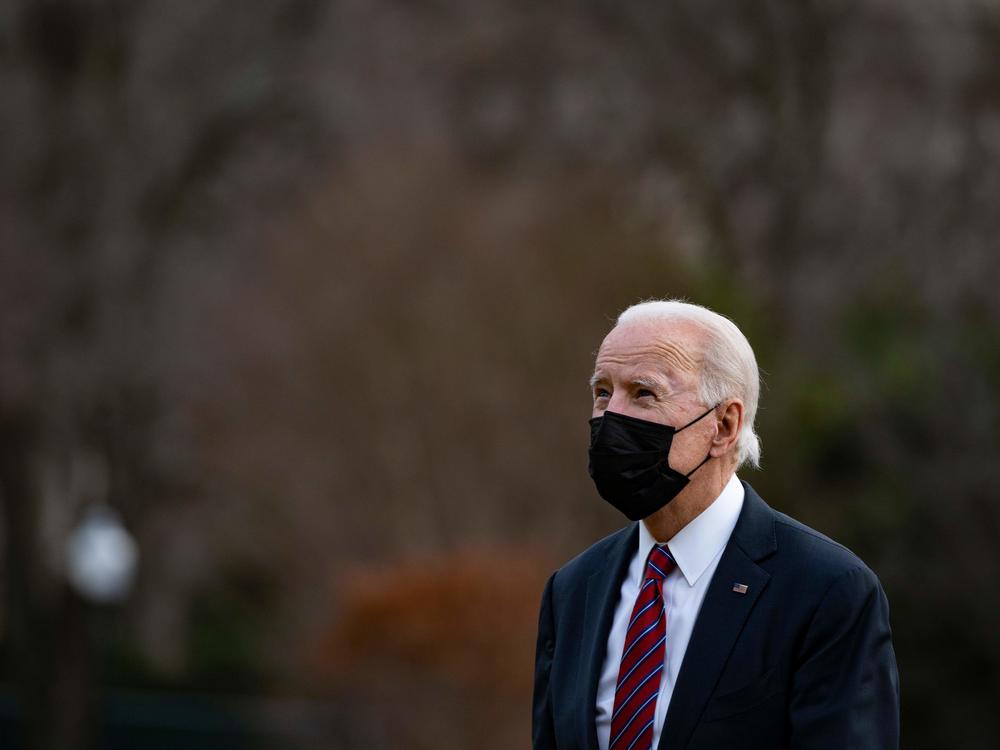Section Branding
Header Content
Even if you're the president, it's hard to avoid a breakthrough COVID infection
Primary Content
Few Americans are shielded as heavily from the coronavirus as President Biden. White House staff members are regularly tested before meetings with the 79-year-old president, and they still wear masks and stay 6 feet away from him during meetings, according to press secretary Karine Jean-Pierre. The virus found him anyway.
With his positive test for COVID-19 on Thursday, President Biden joined the throngs of Americans who have contracted the coronavirus even though they are vaccinated and boosted.
These sorts of breakthrough infections have been climbing steadily as the highly transmissible BA.5 omicron subvariant spreads throughout the country. The symptoms are typically mild, thanks in large part to the protection that vaccines provide against more serious infection.
I'm vaccinated and boosted. Why did I still get COVID-19?
In a word, omicron. The BA.5 omicron subvariant is now the dominant coronavirus strain in the U.S., responsible for 78% of all infections in the U.S., according to data from the Centers for Disease Control and Prevention. It's also hypercontagious. In one recent study in the journal Nature, researchers found that BA.5 is more than four times more resistant to messenger RNA vaccines, like the ones from Pfizer and Moderna.
That's no reason to shy away from vaccines, though. People who are unvaccinated are nearly three times as likely to contract the virus compared to those who are vaccinated and boosted, according to data from the CDC. Meanwhile, the chances of hospitalization are 3.5 times higher, CDC data shows, while the risk of death is six times greater.
"Let me make a clear, clear point here that's a little tough to hear: Whether you've been vaccinated, whether you've been previously infected, whether you've been previously infected and vaccinated, you have very little protection against BA.5 in terms of getting infected or having mild to moderate infection," according to Gregory Poland, head of the Mayo Clinic's Vaccine Research Group. "You have good protection against dying, being hospitalized or ending up on a ventilator."
What are the symptoms to watch for and how sick might I get?
The symptoms to look out for can include a cough, runny nose, sore throat, fatigue, headache and muscle pain. It won't be pleasant, but so far at least there is no evidence to suggest that BA.5 causes more serious illness than past variants of the coronavirus. The U.S. is currently averaging about 400 deaths per day, compared to 3,000 last winter.
Part of the reason for that decline is that treatments have improved, according to Dr. Anna Durbin, a professor at the Johns Hopkins University School of Medicine. People also have protection either from vaccination, earlier infection or both.
"Most people have some underlying immunity that is helpful in fighting the virus," she told NPR earlier this month. "We have antivirals ... And I think that because of that ... we're not seeing a rise in deaths. And that's very reassuring. It tells me that even this virus, even BA.5, is not so divergent that it is escaping all arms of the immune system."
How common are breakthrough cases?
It's hard to say exactly, as there is still not enough data on how much more common breakthrough infections are for newer omicron subvariants like BA.5. With the shift to more at-home testing, accurate figures have also been harder to come by.
Some of the best data on this question comes out of the state of Washington, where research suggests omicron has made breakthrough cases increasingly common. During the peak of last year's surge caused by the delta variant, roughly 24% of cases in the state were breakthrough infections. With omicron, that number soon spiked to more than 40% during the surge that hit the nation last winter.
What should I do if I test positive?
If you've tested positive for COVID-19 or are experiencing symptoms, the CDC advises that you isolate at home for five days. If you have to be around others during that time, the agency says to be sure to wear a well-fitting mask.
The CDC says to wear the mask for 10 days anytime you're around other people inside your home or while out in public. It also says not to travel for a full 10 days from the onset of symptoms or from the date of your first positive test if you're not experiencing symptoms.
Copyright 2022 NPR. To see more, visit https://www.npr.org.

